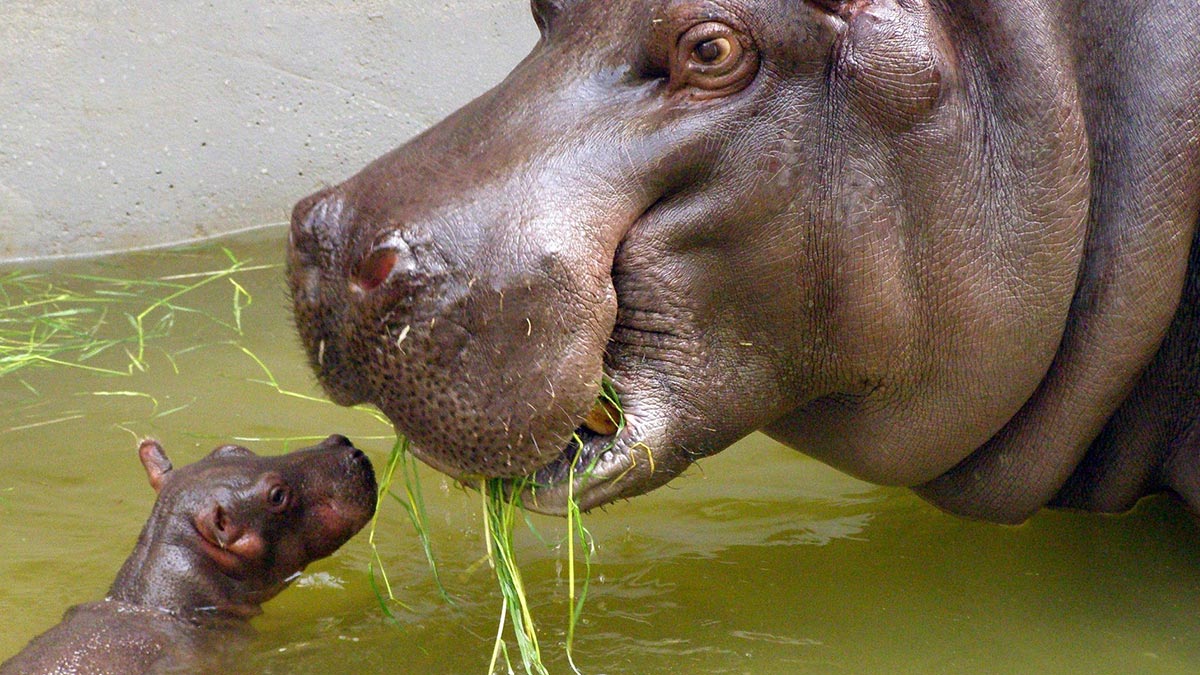
Hippos are semi-aquatic mammals that inhabit in rivers, mangrove swamps, and lakes. Hippos spend most of their time in water and move to land during night time.
Well, this is one BIG baby! He also has a big name – hippopotamus. We’ll just call him hippo for short. He’s kind of like a big cow – a cow that spends half his life in water!
Hippos are semi-aquatic animals. They inhabit in rivers, mangrove swamps, and lakes. Hippos spend most of their time in water and move to land during night time. In some cases female hippos give birth in water, and they have to guide their newborn to the land. When baby hippos are ready, the mother will teach them to swim. But baby hippos can only stay under water for half a minute.
Since hippos are mammals, baby hippos depend on their mother for survival for a year. Though baby hippos can eat grass after three weeks, they still rely on milk for six to eight months. When baby hippos are tired, they climb to their mother’s back to rest. Baby hippos cannot sleep without their mother at their side. Actually, they always sleep together.
Baby hippos are called calves. They weigh from 30 to 50 pounds. They are almost bare and have no fur that covers their body. They have many fat tissues that help in warming their body. They are called “blood sweating” animals because they secrete red fluid that protects them from dehydration. Don’t worry – it doesn’t hurt them!
Hippos are social animals. They are almost forty hippos in a group, which is composed of a dominant male hippo, female hippos and their young. This enables baby hippos to play in a group. With appropriate habitat, hippo survival rate is very high.
However, in the case of many wild animals, hippos can sometimes clash with human. Hippos can destroy crops, sometimes eating entire fields in just a day. But hippos are very useful in balancing the environment because they produce fertilizer for algae, that serves as food to fish. Though they are sometimes aggressive, hippos should be protected because they help balance our environment.